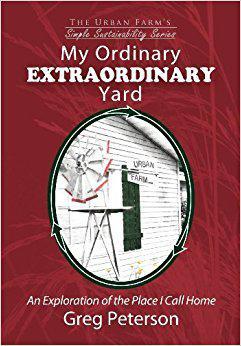Never Buy Another Fluorescent Light Bulb Again
Or How I Saved My Friend Over $28K Per Year Just by Changing Light Bulbs
These days changing a few light bulbs can save hundreds or even thousands of dollars in electricity — and that is just the beginning of the savings and the environmental impact that they make. I’ve been watching the LED (light emitting diode) lighting market for the past few years and recently learned that the technology has advanced by light years in a very short time. Originally, the bulbs (well they are actually not bulbs) did not produce enough light and were far too expensive costing up to $100 per bulb. Plus LEDs had the stigma of being holiday lights and not much more.
So, when my friend Bill called me a few months ago and discussed a proposal that he received to retrofit the condominium complex where he lives with all new energy efficient lighting – to the tune of almost $70,000 — I immediately updated my research. The change and cost benefits of using LED lighting that I discovered are overwhelming.
Background on Bill’s project:
- Nine-floor condominium project in north Phoenix.
- Hallways use nearly 800, fifty-watt halogen bulbs that burn 24-hours per day.
- Annual electricity cost is $31,536 when using the current halogen bulbs.
- Replacing the current halogen bulbs with energy-efficient LEDs results in a yearly electrical cost of $3,784 — a savings of almost $28,000 per year.
This seemed impossible, so I tracked down an engineer at the local power company who verified my numbers. (*See statistics below.) In short, LEDs will provide a savings for Bill of over $34 per year per fixture in electricity and that is just the beginning. Reduced maintenance and labor costs also will be significant. In my opinion the money savings is only the tip of the proverbial iceberg because LED technology not only saves you money it also has a lighter environmental footprint. Let me elaborate.
First, LEDs save electricity by reducing the amount of watts (or electricity) required to create the same amount of lumens (or light.) It’s that simple. The result is a significant reduction in your electric bills. In my friend Bill’s case he is reducing his energy usage for each of the 800 lights from fifty watts to seven watts and receives the same amount of light.
Second, current lighting products — incandescent and fluorescent light bulbs — are consumables. Their life span ranges from a few hundred hours up to approximately 8000 hours in some cases. Then they are tossed into landfills. LED lighting products’ lifespan runs 50,000 hours or more. This shifts light bulbs from the consumable market and places them squarely in the long-term asset category — an asset you conceivably could bequeath to your heirs. This definitely takes the planned obsolescence out of the equation. It also creates the added, if indirect, bonus of reducing environmental exposure to the toxins potentially emitted in the disposal of old style bulbs.
Third, when used in projects that have a considerable number of light fixtures, such as Bill’s project, the long-life span of the LEDs virtually eliminates the need for maintenance staff time spent replacing burned-out light bulbs. Depending on the size of the building, these savings can amount to dozens or hundreds of payroll hours.
Fourth, the use of LEDs results in an overall reduction in the cost of lighting products. For example, in the case of Bill’s project the lights are on 24 hours a day, 365 days a year, which equates to 8760 hours per fixture per year. Each halogen light bulb has a life span of 2500 to 5000 hours, which translates to between 1.75 and 3.5 bulbs used in each socket per year. At $5 per replacement bulb that adds up quickly to $8.75 to $17.50 per light fixture per year or an astonishing $7,000 to $14,000 annually – just to buy throw away light bulbs.
Fifth, LED lighting saves on air conditioning costs because it does not produce the heat that old-style lighting creates. Ironically many of the watts used by old-style lighting primarily create heat, so you are paying to create heat in the space where the lighting lives. Therefore, in many cases, you are then paying to cool the same space with air conditioning.
Finally, the environmental impact of LED bulbs is what I call structural and far reaching.
- By replacing old-style light bulbs with new technology LED there is a significant reduction in the toxins and waste dumped into the landfills.
- LEDs use 50 to 80 percent less electricity and lighten the environmental impact by helping to reduce both pollution and the need for more power plants.
Switching from traditional lighting options to LEDs truly creates a structural change in our society — from the money saved to the reduction of landfill waste and chemicals that we generate, LEDs make a significant difference from beginning to the end.
Next time I will explore the investment and payback that Bill experienced with this project.








Are you hoping to graduate from incandescent lights, but find those LEDs are just so expensive—even if they’re going to last for years.
LED Tube light is the give the best lighting and save the money .